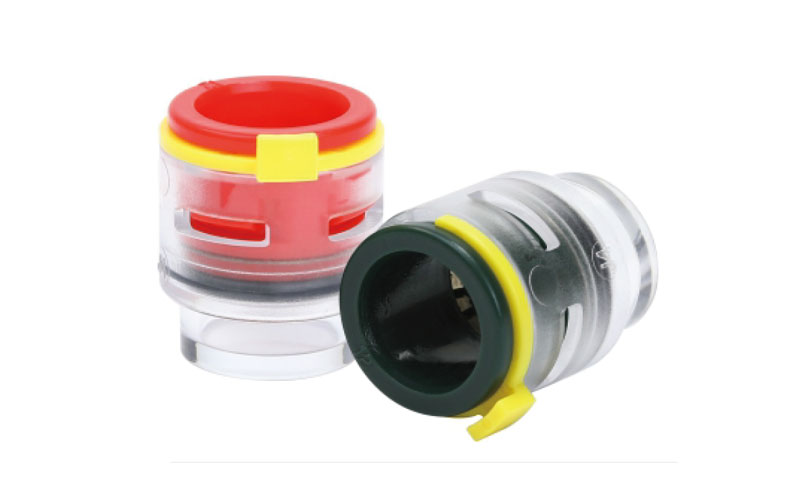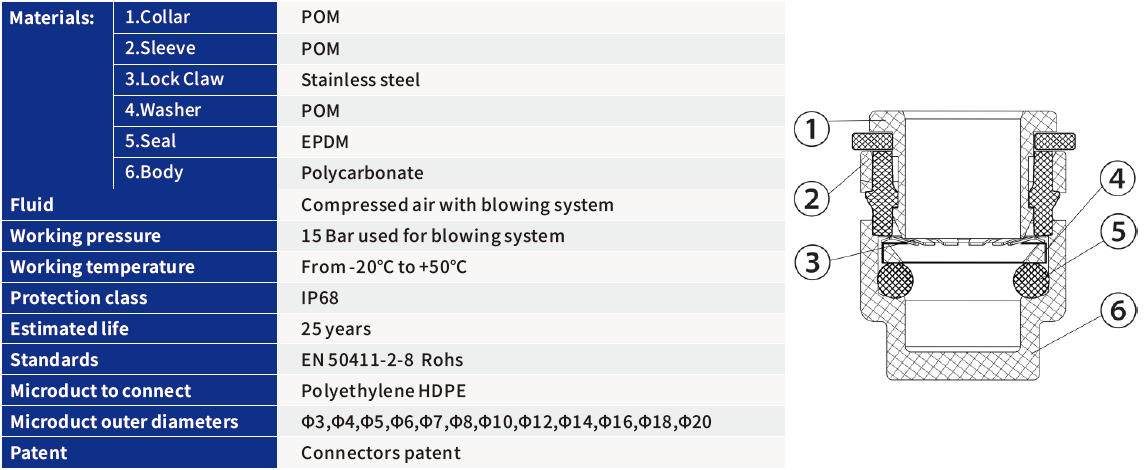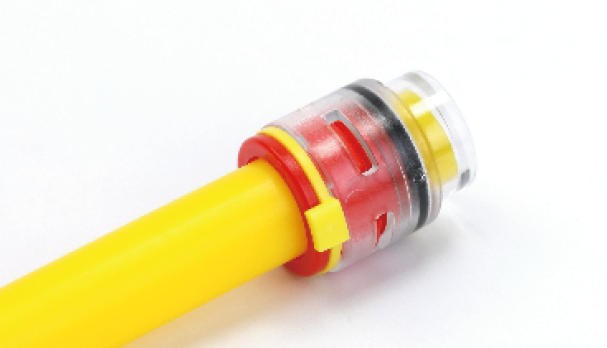
Microduct end caps are essential for sealing the ends of microducts during installation and maintenance. Made from high-quality clear polycarbonate (Makrolon 2807) by Bayer, they prevent debris and moisture entry. Available in various sizes starting from 3 mm, these durable caps ensure the integrity and longevity of microduct systems. Key applications include telecommunications, data centers, and commercial buildings, enhancing the efficiency and reliability of cabling infrastructures across diverse environments. A Microduct End Cap is a simple but crucial passive component used in fiber optic infrastructure. It is a protective plug or seal designed to be fitted onto the open end of a microduct to protect it from environmental contamination during storage, transportation, and before final splicing or connection.
What Problem Does It Solve?
During the construction of a fiber network, microducts are often installed long before the fiber optic cables are blown through them. This leaves the open ends of the ducts vulnerable to:
Moisture Ingress: Water and humidity can enter the duct, leading to corrosion, mold, and ultimately, damage to the future fiber cable.
Dirt and Debris: Soil, sand, mud, insects, and other contaminants can enter the duct. This is a major problem because during the cable blowing process, this debris can:
Block the duct, preventing the cable from being installed.
Abrade the cable, damaging the fragile glass fibers during installation.
Increase friction, reducing the distance the cable can be blown.
Physical Damage: The open end of the plastic duct can be crushed or damaged if left unprotected.
Why is it Important?
While inexpensive and simple, the microduct end cap is a critical component for ensuring network integrity and installation efficiency.
Prevents Costly Remediation: A blocked or dirty duct can require expensive excavation or repair to fix. The end cap is a tiny investment that prevents massive future costs.
Ensures Installation Success: Clean, smooth, and dry ducts are essential for achieving the long cable blow distances required for profitable FTTH deployment.
Protects Network Longevity: By preventing moisture ingress from day one, it protects the multi-decade lifespan of the fiber asset.
✅ Environmental Sealing: The primary function is to create a water-tight and air-tight seal. Many caps use O-rings, gel seals, or a specially designed tapered plug to achieve this.
✅ Contamination Barrier: It acts as a physical barrier, completely blocking the entry of dirt, insects, and other particulates.
✅ Pressure Testing: Some robust end caps are designed to withstand pressure, allowing installers to perform an air pressure test on the duct system to check for leaks or damage after installation but before cable blowing.
✅ Identification: End caps are often color-coded (e.g., following the ISO 1-12 color coding standard for microducts) to identify the specific duct within a multi-duct bundle or to indicate its purpose.
✅ Durability: Made from tough, UV-resistant materials like polyethylene (PE) or polypropylene (PP) to withstand long-term exposure to sunlight, temperature changes, and harsh environments if left on a pole or in a manhole.
How and Where Is It Used?
Microduct end caps are ubiquitous throughout the lifecycle of a fiber network:
Manufacturing & Shipping: Ducts are capped at the factory to keep them clean during shipping and storage.
Civil Works & Installation: As ducts are laid underground, pulled through conduits, or installed aerially, the end caps remain on any open ends.
At the Distribution Point: In a fiber distribution hub (FDH) or closure, the end of a feeder duct (coming from the central office) and the beginnings of distribution ducts (going toward homes) will be capped until a technician is ready to connect them.
At the Customer Premise: The end of the drop microduct at the side of a house will be capped until the day the service is activated and the fiber cable is blown through to the terminal.
When the technician is ready to install the cable, the end cap is simply removed (often by hand or with a simple tool), revealing a clean, pristine duct ready for the cable-blowing equipment to be connected.

© 2024-2026 ARTIC FIBER OPTIC CO.,LTD. All Rights Reserved.